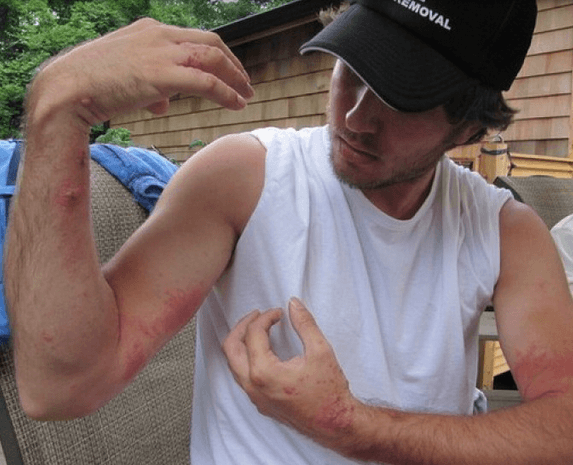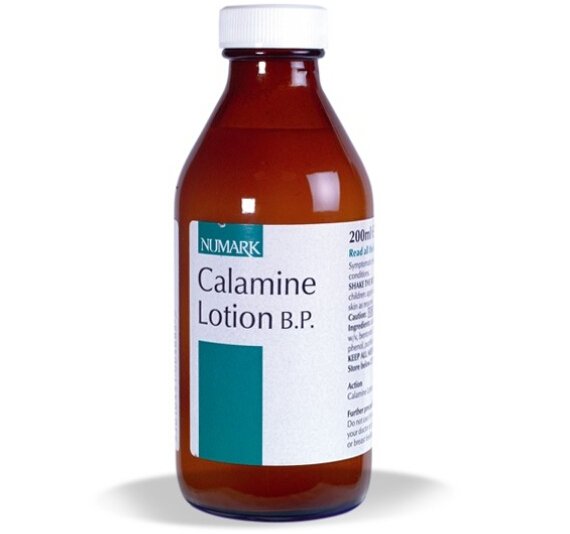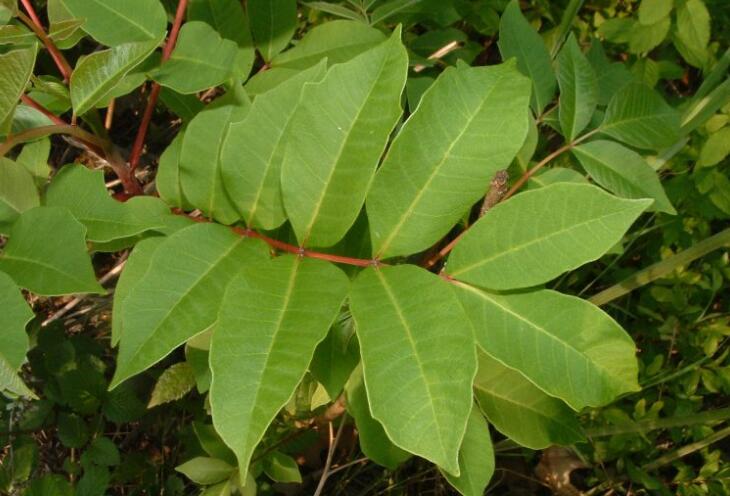METRO
How to Get Rid of Poison Ivy Rash Overnight: 14 Easy Ways
Published
8 months agoon
By
1oo9t
Poison ivy rash can be an incredibly uncomfortable and irritating experience. Many people have suffered from this condition. Even a tiny amount is enough to cause a reaction. The rash usually appears within 12-48 hours after exposure and can last for weeks. While it’s not possible to eliminate the rash overnight, there are several effective methods to significantly reduce symptoms and speed up the healing process. Here are 14 easy ways to help you get relief from poison ivy rash as quickly as possible…Click Here To Continue Reading>> …Click Here To Continue Reading>>
What is Poison Ivy Rash?
Poison ivy rash is a form of allergic contact dermatitis caused by exposure to urushiol. This is an oily substance found in the leaves, stems, and roots of poison ivy plants. When this oil comes into contact with your skin, it triggers an immune response that leads to inflammation, itching, and the formation of a red, bumpy rash. In some cases, the rash may also develop into fluid-filled blisters.
A poison ivy rash typically appears as red, itchy, and swollen skin. It may have a streaky or linear appearance, following the pattern of contact with the plant. In some cases, small bumps or blisters filled with clear fluid may develop.
The rash is often very itchy and can be painful or burning. The appearance of the rash can vary depending on the severity of the reaction and the individual’s skin type.
How to Get Rid of Poison Ivy Rash Overnight: 14 Easy Ways
1. Wash the affected area thoroughly
The first and most crucial step in treating poison ivy rash is to remove any remaining urushiol oil from your skin. This oily substance is what causes the allergic reaction and can spread to other parts of your body or even to other people if not removed promptly.
As soon as you realize you’ve been exposed to poison ivy, wash the affected area with warm water and mild soap for at least 10 minutes. Be sure to clean under your fingernails and any other areas that may have come into contact with the plant.
If you have any clothing, shoes, or gear that may have been exposed, wash those items thoroughly as well to prevent re-exposure.
2. Apply a cool compress
One of the most effective and simple ways to find relief from poison ivy rash is to apply a cool compress to the affected area.
Soak a clean, soft cloth in cold water, wring it out, and apply it to the rash for 15-30 minutes at a time, several times a day. The cold temperature helps reduce inflammation, swelling, and itching, providing much-needed relief.
You can also use ice packs wrapped in a towel if you prefer a colder sensation. Be sure not to apply ice directly to your skin, as this can cause further irritation and even damage to the delicate skin.
3. Take an oatmeal bath
Oatmeal has long been used as a natural remedy for various skin irritations, and for good reason. It contains anti-inflammatory and soothing properties that can help calm irritated skin, reduce itching, and promote healing.
To make an oatmeal bath, simply add 1 cup of finely ground colloidal oatmeal to a lukewarm bath and soak for 15-20 minutes. You can find colloidal oatmeal at most drugstores. Or you can make your own by grinding plain, unflavored oats in a food processor or blender until they reach a fine, powder-like consistency.
After your bath, pat your skin dry gently with a soft towel, don’t rub, as this can further irritate the skin.

4. Use calamine lotion
Calamine lotion is a popular and widely available over-the-counter remedy for poison ivy rash and other skin irritations. It contains zinc oxide and ferric oxide. These work together to help dry out blisters, soothe itching, and promote healing.
To use calamine lotion, apply a thin layer to the affected area as needed, but be sure not to apply it to any broken skin or open sores. You can reapply the lotion several times a day as needed for relief. But if you experience any worsening of symptoms or irritation, discontinue use.
5. Try hydrocortisone cream
For more severe cases of poison ivy rash, or for those who don’t find relief with calamine lotion, over-the-counter hydrocortisone cream may be a more effective option.
This topical steroid works by reducing inflammation and itching, providing stronger relief than calamine lotion alone. Look for a cream with 1% hydrocortisone and apply it to the rash twice daily, following the instructions on the package carefully.
Don’t use the cream for more than 7 days without consulting a doctor. Because prolonged use of topical steroids can cause side effects like skin thinning and discoloration.
6. Take an oral antihistamine
Oral antihistamines can be a lifesaver when it comes to managing the intense itching associated with poison ivy rash. Over-the-counter options like diphenhydramine (Benadryl) work by blocking the histamine response that causes itching, swelling, and inflammation.
They can also cause drowsiness, which may be helpful if the itching is keeping you up at night. If you need relief during the day without the drowsy side effects, look for non-drowsy options like loratadine (Claritin) or cetirizine (Zyrtec).
Always follow the dosage instructions on the package and talk to your doctor if you have any concerns or pre-existing medical conditions.
7. Apply aloe vera gel
Aloe vera is a natural wonder when it comes to soothing skin irritations and promoting healing. It contains anti-inflammatory and antimicrobial compounds that can help reduce swelling, itching, and the risk of infection.
To use aloe vera for poison ivy rash, simply apply a thin layer of pure aloe vera gel to the affected area. You can find aloe vera gel at most drugstores, or you can harvest it directly from an aloe plant if you have one.
For extra cooling relief, try refrigerating the gel before applying it to your skin. Just be sure to do a patch test first to ensure you don’t have any allergies or sensitivities to aloe.
8. Make a baking soda paste
Baking soda is another simple but effective home remedy for poison ivy rash. When mixed with water to form a paste, it can help dry out oozing blisters, relieve itching and inflammation, and promote healing.
To make a baking soda paste, mix 3 parts baking soda with 1 part water until it forms a thick, spreadable consistency.
Apply the paste to the affected area and let it dry completely before rinsing it off gently with cool water. You can repeat this process several times a day as needed, but be sure to stop if you experience any irritation or worsening of symptoms.
9. Soak in an Epsom salt bath
Epsom salt, also known as magnesium sulfate, has been used for centuries to relieve a variety of ailments. This includes skin irritations and muscle aches. When added to a warm bath, it can help reduce swelling, dry out blisters and rashes, and promote healing.
To make an Epsom salt bath, add 1-2 cups of Epsom salt to a warm (not hot) bath and soak for 15-20 minutes. Be sure not to stay in the bath too long, as the warm water can sometimes be irritating to sensitive skin.
After your bath, rinse off gently with cool water and pat your skin dry. You can take an Epsom salt bath once or twice a day as needed for relief. READ FULL STORY HERE>>>CLICK HERE TO CONTINUE READING>>>
10. Dab on apple cider vinegar
Apple cider vinegar is a versatile home remedy that can be used for a variety of skin issues, including poison ivy rash. The acidity in the vinegar helps dry out blisters, reduce itching, and promote healing, while its anti-inflammatory properties can help soothe irritated skin.
To use apple cider vinegar for poison ivy rash, soak a cotton ball or soft cloth in the vinegar and gently dab it on the affected area. Be sure not to use this remedy if you have any open sores or broken skin, as the vinegar will sting and cause further irritation. If you experience any burning or irritation, rinse the area off with cool water after 15 minutes.
11. Use a cold milk compress
Milk may seem like an unlikely remedy for poison ivy rash, but it can be quite soothing and effective for irritated skin. The fat and proteins in milk help calm inflammation, reduce redness, and promote healing. The cold temperature provides relief from itching and discomfort.
To make a cold milk compress, soak a clean, soft cloth in cold milk and apply it to the affected area for 15-20 minutes at a time. Any type of milk will work, but whole milk may be the most effective due to its higher fat content. After using the compress, be sure to rinse the area gently with cool water and pat dry.

12. Try witch hazel
Witch hazel is a natural astringent that has been used for centuries to treat a variety of skin issues, from acne to insect bites. It contains tannins that help reduce swelling, repair damaged skin, and relieve itching and inflammation.
To use witch hazel for poison ivy rash, simply apply it to the affected area using a cotton ball or soft cloth. You can find witch hazel at most drugstores, often in the form of liquid or pre-soaked pads.
Be sure to look for a product that doesn’t contain alcohol. This can be drying and irritating to the skin, especially when it’s already inflamed.
13. Dab on tea tree oil
Tea tree oil is a powerful essential oil that has been shown to have anti-inflammatory, antimicrobial, and wound-healing properties. When applied to poison ivy rash, it can help speed up healing, prevent infection, and reduce itching and inflammation.
To use tea tree oil safely, mix a few drops with a carrier oil like coconut, jojoba, or olive oil. Use a cotton swab or clean finger to gently dab the mixture on the affected area. Be careful not to apply it to any open sores or broken skin. Never apply undiluted tea tree oil directly to your skin. Because it can cause irritation, allergic reactions, or even chemical burns in some people.
14. Apply a bentonite clay paste
Bentonite clay is a type of natural clay that has been used for centuries to treat a variety of skin issues, from acne to eczema.
When mixed with water to form a paste, it can help draw out toxins, dry up blisters, and relieve itching and inflammation associated with poison ivy rash.
To make a bentonite clay paste, mix a small amount of bentonite clay powder with enough water to form a thick, spreadable consistency. Apply the paste to the affected area and let it dry for 15-20 minutes before rinsing it off gently with cool water.
You can repeat this process once or twice a day as needed for relief. However, be sure to stop if you experience any irritation or worsening of symptoms.
Other Tips to Help Get Rid of Poison Ivy Rash Quickly
In addition to these home remedies, there are a few other things you can do to help your poison ivy rash heal faster and more comfortably:
- Avoid scratching the rash at all costs. This can cause further irritation, increase the risk of infection, and even lead to scarring. If the itching is severe, try applying a cold compress, taking an oral antihistamine, or wearing gloves to bed to prevent unconscious scratching during sleep.
- Leave blisters alone and let them heal on their own. Popping or picking at blisters can delay healing, and increase the risk of scarring or infection. This can even spread the rash to other parts of your body or other people. If a blister breaks on its own, gently clean the area with mild soap and water and apply a bandage to protect it from further irritation.
- Wear loose, soft, breathable clothing. Try to avoid irritating the rash further and allow your skin to breathe and heal. Natural fabrics like cotton, bamboo, and silk are often the most comfortable and least likely to cause additional irritation or friction. Avoid tight, rough, or synthetic fabrics that can trap heat and moisture and aggravate your symptoms.
- Stay cool and avoid overheating. The heat and sweat can aggravate itching, inflammation, and discomfort associated with poison ivy rash. If possible, stay in air-conditioned environments, use a fan to keep your skin cool and dry, and avoid hot showers, baths, or saunas until your rash has healed.

How to Prevent Poison Ivy Rash?
Remember, the best way to prevent poison ivy rash is to learn to identify the plant and avoid contact with it whenever possible.
When spending time outdoors in areas where poison ivy may be present, wear protective clothing like long sleeves, long pants, closed-toe shoes, and gloves.
If you think you may have come into contact with the plant, wash your skin and clothing thoroughly with warm, soapy water as soon as possible.
If you do develop a poison ivy rash despite your best efforts, try not to panic or despair. While the rash can be uncomfortable, unsightly, and frustrating, it is rarely serious and will eventually go away on its own with time.
When to See a Doctor?
While most cases of poison ivy rash can be managed at home, there are some situations where you should seek medical attention. Make an appointment with your doctor if you notice any of the following:
- Fever over 100°F (37.8°C)
- Pus or soft yellow scabs on the rash, which could indicate an infection
- Severe itching that interferes with sleep or daily activities
- The rash spreads to sensitive areas like your eyes, mouth, or genitals
- The rash doesn’t improve after a few weeks of home treatment
In severe cases, you may need to go to the emergency room right away. Seek immediate medical care if you experience:
- Difficulty breathing or swallowing
- Swelling that causes an eyelid to swell shut
- A rash that covers a large portion of your body
- Uncontrollable itching that doesn’t respond to any treatments
Common Questions
1. How long does the poison ivy rash last?
The duration of a poison ivy rash can vary from person to person, but it typically lasts anywhere from one to three weeks. In most cases, the rash will start to improve within 7-10 days.
However, it may take up to 21 days for the skin to heal completely. Severe cases or those with complications like infection may take longer to resolve.
2. Is poison ivy rash contagious?
No, poison ivy rash itself is not contagious. You cannot catch poison ivy rash from someone else by touching their rash or the fluid from their blisters.
However, if there is still urushiol oil on their skin or clothing, you can develop a rash if you come into contact with it. This is why it’s important to wash thoroughly after exposure and handle contaminated items carefully.
3. Can you spread poison ivy rash on your body?
Yes, it is possible to spread poison ivy rash to other parts of your body if you still have urushiol oil on your skin. For example, if you touch the oil and then touch another part of your body, you can transfer the oil and develop a rash in that area. This is why it’s crucial to wash your skin thoroughly with soap and water as soon as possible after exposure.
4. Does scratching poison ivy make it spread?
Scratching a poison ivy rash does not cause it to spread in the same way as spreading the oil can. However, scratching can lead to skin damage, bacterial infection, and scarring, which can make the rash more severe and prolong the healing process. Scratching can also be very uncomfortable and may interfere with sleep and daily activities.
5. Does poison ivy rash always blister?
No, not everyone who gets poison ivy will develop blisters. Some people may only experience red, itchy skin without blistering.
The severity of the reaction can depend on factors like the amount of urushiol oil encountered, the sensitivity to the oil, and overall health. People who have had poison ivy before or who are highly sensitive may be more likely to develop blisters.
Related
You may like
METRO
Woman mourned the death of her husband at his funeral ‘only to find him at her doorstep 4 days later’!
Published
1 day agoon
March 31, 2025By
1oo9t
The unfortunate woman, Victoria, told local news outlets that she ended the year with a tragedy. During a visit to the local hospital, she was told by hospital staff that her husband, Julio, passed away from c0ronavirus.
She reportedly identified the body that she was shown in the hospital morgue, after which the medical staff released the corpse to the grieving wife.
Making arrangements to pay the last respects to her husband, Victoria, arranged to have Julio’s body be taken 30 miles away from the hospital to her village in Honduras.
She then spent one entire night surrounded by distressed relatives as they had an all-night wake before his final burial the next day…Click Here To Continue Reading>> …Click Here To Continue Reading>>
On the day of the funeral, Julio’s children saw the open coffin and found something amiss. They took a look at the body and wondered whether it was really that of their father’s.
But despite their doubts, the relatives reportedly went ahead with the ceremony and the man was laid to rest in a funeral that Victoria spent more than $430.
In the days that followed, Victoria continued grieving for her husband until, out of nowhere, she saw Julio himself arrive back at their house on the fourth day since the funeral was held.
“That wasn’t my husband who died, because I have my husband here now. I recognised him,” the wife said, as quoted by the Daily Mail.
It was only after her husband returned home that Victoria discovered he had been missing for a few days because he went for a walk and fell over at a spot in the neighboring municipality.
Unable to get up, the man spent several days there, surviving without anything to drink or eat. He was later found injured in a field before his return home. Although her husband was back, it also meant that she buried a complete stranger in her village and her family has no idea who they were grieving for. READ FULL STORY HERE>>>CLICK HERE TO CONTINUE READING>>>
“I would like them to give me back some of what I spent, because they gave me the body of someone I don’t know,” Victoria shared.
“The authorities at the morgue should have properly examined him to see if it was really him.”
But on the other hand, the hospital said that the wife was to blame for misidentifying the man as her husband. They confirmed that the man arrived with Covid-19, and because of his serious condition, he didn’t survive in the hospital for more than a few hours.
The hospital staff had a look at the picture Victoria was carrying of her husband, and they found him to resemble the body of the man in the morgue. In addition to this, Victoria herself recognized the body at the time as that of her husband’s.
The hospital director reportedly said, “The logical thing was to bring the body back so we could investigate.
But later the relatives called back and said he was the right person after all and they were going to bury him.
We have everything documented. We even have an apology from one of the children, if this becomes a lawsuit.”
Related
METRO
A Girl Rushed Out Of McDonald’s Bathroom Crying, Then Her Mom Saw Something Wrong On Her Legs
Published
3 days agoon
March 29, 2025By
1oo9t
The restaurant was packed with hungry customers busy eating at their tables when the customers’ attention shifted to a four-year-old girl named Kayla running towards her mom. Kayla’s face was filled with tears, and she was hysterically crying when she reached her mom’s arm. While Kayla’s mom, Nicole, was comforting her daughter, she asked her daughter what was wrong. Kayla was still crying and couldn’t speak; she continued sobbing like she was in deep pain. That was when Nicole started scanning her daughter’s body and saw what was wrong.
There was something on Kayla’s leg. Hello, wonderful people! I’m Jamie Buck from Wonderbot, and here is a story about a girl who rushed out of a McDonald’s bathroom crying. Then her mom saw something wrong on her legs. Before we begin, make sure you smash the like button, subscribe to our channel, and click the notification bell for more amazing videos…Click Here To Continue Reading>> …Click Here To Continue Reading>>
It was during New Year’s Day when Nicole and her daughter Kayla decided to spend their day at the park and buy some food at McDonald’s. It was Kayla’s favorite fast food. The two were so excited to spend time together and bond at the park. While Nicole was closing their front door, she turned to Kayla and asked her if she was ready to have fun. Kayla nodded her head with excitement, having no idea what was about to come to them.
When Nicole and Kayla arrived at the park, the piercing sun was shimmering down on them. It was a perfect bright day to spend at the park. Kayla immediately ran towards the roundabout and asked her mom to spin her. You could hear Kayla’s giggle throughout the playground while her mom was spinning her. Nicole’s phone started ringing, and she turned around to answer the call while Kayla got off the roundabout to go to the slides.
While Nicole was busy talking on her phone, she suddenly heard a scream. Nicole quickly ended her call when she realized it was Kayla. The moment Nicole got off the phone, she turned around to find Kayla had fallen from the slide and scratched her head. She was so worried about what had happened and continued comforting her daughter while she was sobbing. After a while, when Kayla had finally calmed down, she asked her mom if she could get food already.
Nicole immediately stood up and told her daughter, “Yes, of course, dear.” The two left the park and drove off to the nearest McDonald’s, which was about 10 minutes away from where they were. Little did Nicole know that it would have been better if they just ate somewhere else. When Nicole and Kayla arrived at McDonald’s and walked into the restaurant, they noticed that the place was filled with people. Nicole’s attention was caught by a group of teenagers that were seated in the corner of the restaurant.
The group was listening to music while sipping on their soda. Two of the teenagers suddenly turned their look at Nicole and her daughter and sniggered. What could those two be thinking? It was mentioned earlier the restaurant was packed, so it’s no surprise that the line was long too. After what seemed like forever standing in line, it was finally Nicole’s turn to order.
While she was ordering their food, she asked Kayla to sit at the table in the corner and wait there while she was ordering food. Kayla politely followed her mom’s instructions and sat at the table while watching a video on YouTube on her mom’s phone. But then suddenly, a scream was heard throughout the restaurant. A scream came from the teenager that was sitting in the corner of the restaurant. The group started a fight and were yelling at each other.
Nicole immediately walked over to Kayla and comforted her, trying to drive her attention away from the battle by making her watch YouTube videos. Staff from the restaurant quickly went to the group to break up the fight and kick them out of the place. While the group was kicked out, two teenage girls from the circle were still sitting at the table. It was finally time to eat. The smell of burgers and fries lingered in the air as Nicole and Kayla started digging into their well-deserved lunch.
Kayla was eating a Happy Meal while Nicole was eating her chicken burger and some fries. In the middle of their mealtime, Kayla suddenly looked at her mom with a stern but innocent look. “Mommy, I need to use the toilet,” Kayla whispered as she finished the last bite of her cheeseburger. Kayla wiped her hands and got up to go to the toilet. When she walked over, she noticed the lock was shut.
There must be someone in there, she thought. She looked back at her mom, who smiled at her. Suddenly, she heard something. It was coming from inside the toilet. Giggles and laughs could be heard while Kayla was patiently waiting outside the toilet. READ FULL STORY HERE>>>CLICK HERE TO CONTINUE READING>>>
After a couple of minutes remaining, the door opened, and the two teenage girls from earlier went out of the bathroom together with a smirk on their faces. Nicole was intimidated by the girls as she watched them walk past Kayla. Nicole then signaled her daughter to enter the toilet and assured Kayla that she’ll stay outside and wait for her. While Nicole was patiently waiting for Kayla at her table, she heard a scream coming from the toilet. “Mom!
Kayla screamed while running out of the bathroom with tears streaming down her face. Nicole immediately stood up from her seat, not minding her bag that fell onto the floor. As a mother, one thing that you never want to hear is the sound of your kid screaming. Kayla ran into her mom’s arms, sobbing. In the toilet, she says, Nicole immediately went to the toilet to check what was wrong.
She scanned the whole room and thought there was nothing wrong there, so she continued studying to see what could be the reason behind her daughter’s outburst. She saw that there were a few toilet paper rolls rolled out on the floor, and the faucet was dripping. Nicole checked the toilet seat, and that is when she figured the reason for her child’s outburst. When she went to the toilet seat, she noticed that it looked like the chair was covered with a white sticky substance. But as Nicole got closer to inspect, she realized that it was glue.
The toilet seat was smothered with super glue. She then realized that someone did this on purpose. Nicole stormed out of the toilet while her heart was pounding and yelled to call the manager and all employees in the restaurant. Nicole went over to her daughter, who was still crying and yelling in pain. She checked on Kayla to see what was wrong and saw that her daughter’s skin was peeled off at the back of her legs.
While Kayla was still crying in her mother’s arms, Kayla was terrified of what happened, and her mother was furious. Nicole yelled out for help in the crowd while stopping her tears from falling out of her eyes. Joanna, the assistant manager at McDonald’s, thought that she had seen it all, from small fights over a Big Mac to a drunk customer and misbehaving teens. She was trained and was already used to handling heated situations. She knew what to do to solve problems, but in her 15 years in the industry, it was the first time to see and experience something like this.
She had never seen anything like this. The moment Nicole asked for help, Joanna and her co-employees all gathered around Kayla and provided medical assistance. The staff helped in cleaning the wound and bandaging her up while Kayla was crying in her mom’s chest. After that, Nicole decided to go to the nearest hospital, so she called a family member to come and get them. But the assistance that was given to them was not enough for Nicole.
She knew that there was something that she needed to do. Nicole took the matter to her social media account and shared on her personal Facebook what happened, hoping that this would bring the pranksters to justice. On her post, Nicole wrote, “To the two young blonde girls that thought it would be hilarious to put super glue on the disabled and baby changing toilet in McDonald’s, I just want you to know that I still have to console my four-year-old daughter who was unfortunate enough to use the toilet after your little prank. She is hoping that the two teenage girls who played the prank on her daughter would be found and punished. Kayla is just an innocent little girl and does not deserve all of this.
After some investigations, the two teenage girls were finally found and were interviewed by the police officers. The two girls immediately admitted what they did and sincerely apologized to Nicole and Kayla. The two girls said they were regretting what they did and that it was a prank gone wrong. But was the apology enough for Nicole and daughter Kayla? Imagine Kayla, a four-year-old who would have to live her life with this terrible memory marked in her mind.
After hearing that the police had taken appropriate action against the two teenage girls, Nicole felt relieved. It’s been weeks since the incident happened, and the things that happened that day are still fresh in her mind. She watches as her daughter peacefully plays with her dolls. Some justice finally, she thought to herself. She takes a sip of her cup of coffee before smiling to herself and watching her brave daughter playing.
Such a story right? This story just proves to show that pranks can be a fun way to trick your friends, but it can result in a bad scenario. Hopefully, Nicole and Kayla’s experience will remind those people who love doing pranks and tricks on their friends to think twice about the people they would upset all for the sake of a laugh. So next time you want to play a prank on someone, make sure to think about it first and that no one will get hurt.
Related
METRO
The bus driver picked up the children early in the morning as usual, and the parents found out they were not at school
Published
3 days agoon
March 29, 2025By
1oo9t
Black ice (a thin layer of new ice on a road) is dangerous. If you have ever tried to walk or ride it then you know.
This is why the parents of Shelby County were not surprised when they were informed that school would start late because they had to wait for the ice on the road to melt.
Unfortunately, bus driver Wayne Price did not receive the message on time. He had already collected all the children, and knew that returning them to their homes
would only increase the chance of an accident. So instead, he did something completely different…Click Here To Continue Reading>> …Click Here To Continue Reading>>
Instead of parking the bus and letting the kids play on the smartphone for two hours, he knew he needed to do something to keep them busy.
His actions may not have been according to the book, but they also did not surprise elementary school principals in Montevallo, Alabama.
Understand, they know Wayne. They know he is capable of doing such a ‘trick’.
But the children did not know what to expect. When they stopped at a local McDonald’s branch they must have wondered if Wayne had lost it. READ FULL STORY HERE>>>CLICK HERE TO CONTINUE READING>>>
Turns out he just wanted to buy all the kids breakfast, and paid for everyone’s breakfast instead of the breakfast they were supposed to eat at school.
To put things in perspective, there were between 40 and 50 kids on Wayne’s bus, so you can imagine how much the bill came out. School principals responded to the
gesture on Facebook and wrote: “Mr. Price, one of our bus drivers, really demonstrated the holiday spirit! On Tuesday, when school started late because of ice on the
road and we could not serve breakfast, he bought breakfast at McDonalds for all the kids who were on the bus! What a wonderful gesture that the students will
remember forever!”
After hearing every good deed of the bus driver, people from all over the world flooded Wayne with messages of support and encouragement.
What a beautiful thing to do, and what a wonderful way to do above and beyond for kids who he so obviously care about!
If you think Wayne Price’s deed is commendable, share the article with your friends and family!
Related
Trending
-

 METRO9 months ago
METRO9 months agoBizarre New McDonald’s Location in the Middle of Nowhere Has People Thinking They Know Something We Don’t
-

 IN-THE-NEWS10 months ago
IN-THE-NEWS10 months agoPolice Recover Stolen Vehicle, Arrest Suspect In Jigawa
-

 SPORTS6 months ago
SPORTS6 months agoBundesliga review: The referee who wasn’t allowed to watch TV
-

 HEALTH & LIFESTYLE8 months ago
HEALTH & LIFESTYLE8 months ago2 Reasons Why Doctors Wear Green or Blue Attire During Operation
-

 IN-THE-NEWS9 months ago
IN-THE-NEWS9 months agoMother Accuses Nigerian Policemen Of Torturing Son To Death In Abuja Cell
-

 IN-THE-NEWS10 months ago
IN-THE-NEWS10 months agoFemale Gym Instructor Of Alleged Organ Harvester, Andrew Ochekwo, Declared Missing, Last Location Showed She Was In Aba
-

 SPORTS6 months ago
SPORTS6 months ago“We are stunned!” Game from Nord-Klub to Brand before the cancellation
-

 METRO8 months ago
METRO8 months agoBefore The Biafra War There Was A Man Called Boro, See What He Did
